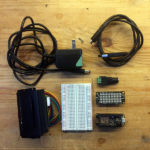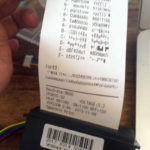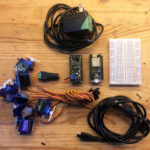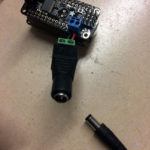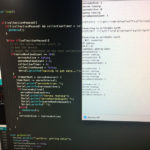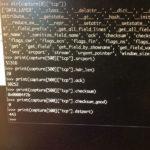Resources
Overview: Tiny Oracle was an idea I had a few months ago. Its based around aggregating new / traffic / weather / tweets etc into one place, and then generating how a city “feels” based on that data. I didn’t get to the data part this week, but I did make some good progress with the hardware, and even started writing my own restAPI to handle requests. The results, despite it just being a tech test were whimsical.
System: This took a bit of a twisty road. Basically I started thinking I would make a Python based bot that just aggregated all my feed data, parse it, then toss some commands over to a BaaS provider like PubNub or AdafruitIO. But I once again ran into the issue w/ the Feather and its MQTT library, that there’s something buried in it, that prevents it from being totally non-blocking. I knew the particle library didn’t have this issue, so I started digging around in it, and seeing if I could re-mod the mod to re-use for the Feather. But it looked like the particle library was just doing GET requests. So I started looking around for some info on REST APIs, and decided I didn’t need a Pub/Sub setup. I found some tutorials, downloaded Flask (which I like and am familiar with), and starting making a basic API to pass on some JSON. The Feather makes a request on a timer, grabs the JSON the server serves up, and then prints out a message and does a little display based on it. I found it pretty straight forward to build this little Server / Client system. It doesn’t have any security, so its only for local testing, but I would like to make a version that does. But I would like to keep rolling my own solutions going forward.
Components: Adafruit Feather Huzzah, Nano Thermal Printer, FLASK, Python, Adafruit Neopixel Featherwing.
Things I Experimented With: FLASK rest-ful, requests, protocols.
Things I Learned: A lot about basic rest apis! And that you really don’t have to send things to “my butt” if it doesn’t have to go to there. Most of the MQTT libraries for the various BaaS providers seem to have some kind of blocking issue (pubnub / adafruit) in the subscribe function. Also that a lot of data can still just be grabbed with just GET requests.
Future Iterations: I really want to get this to a point where its parsing different data feeds to build its feelings. I also want to keep building a little restAPI for more of my personal projects.

